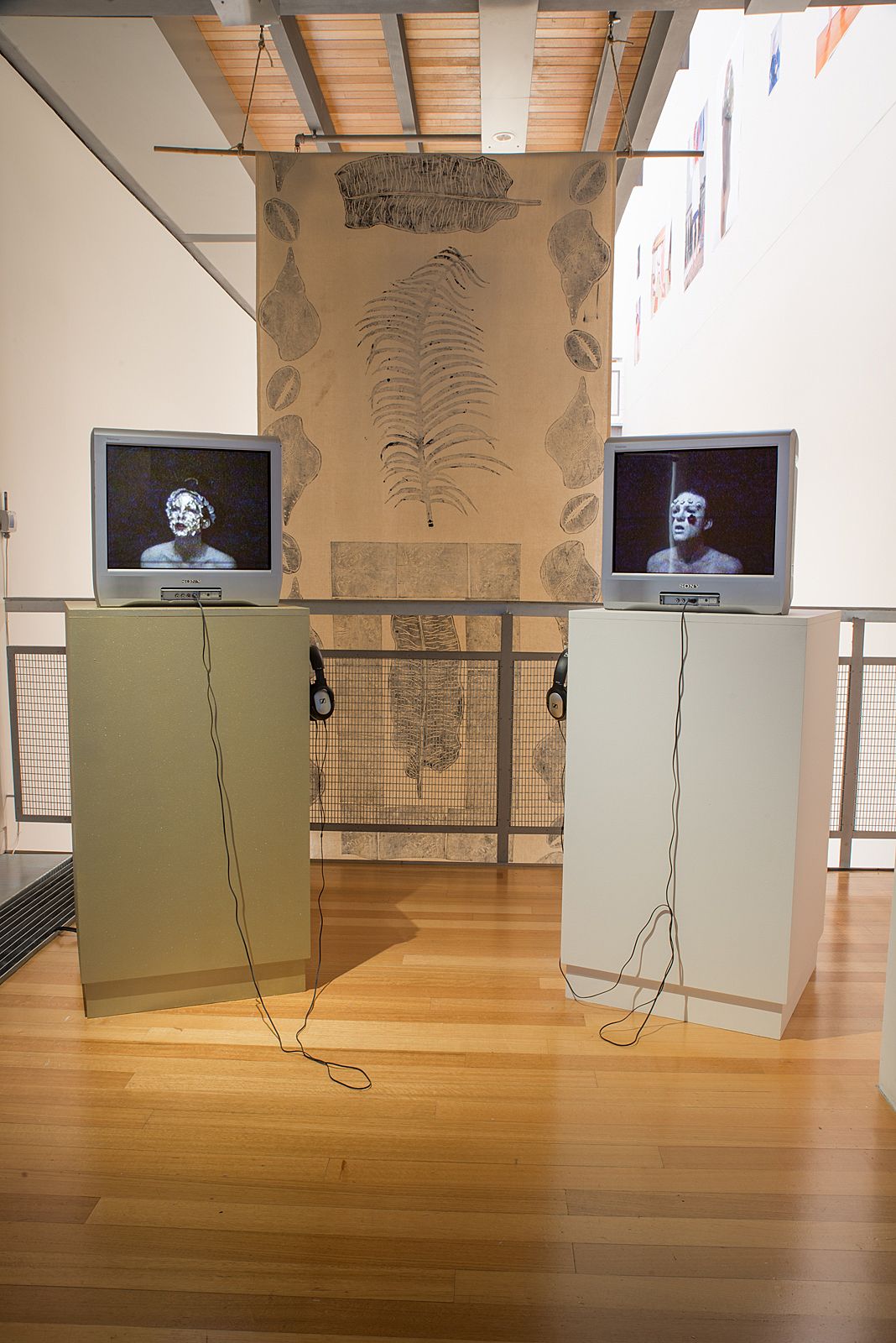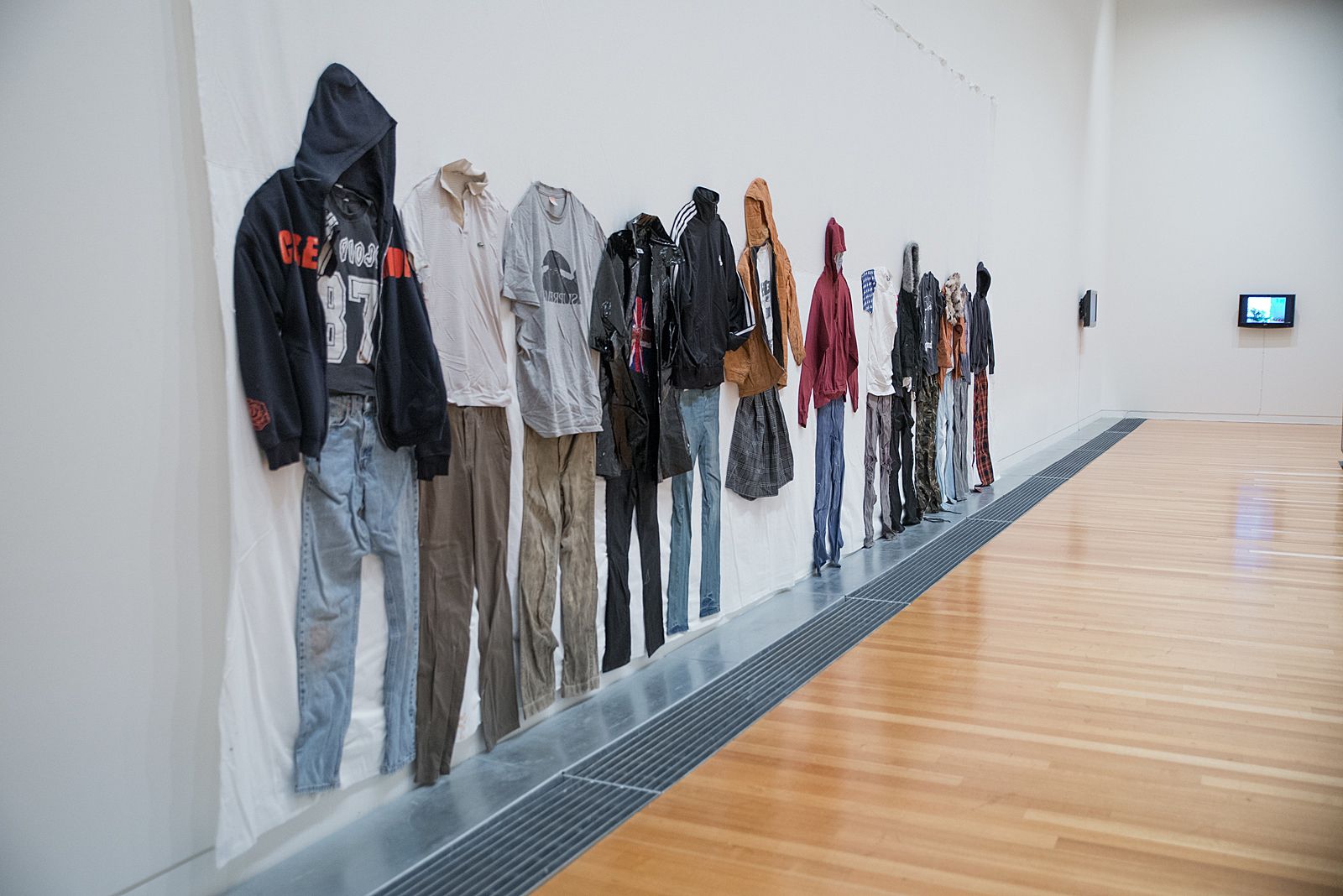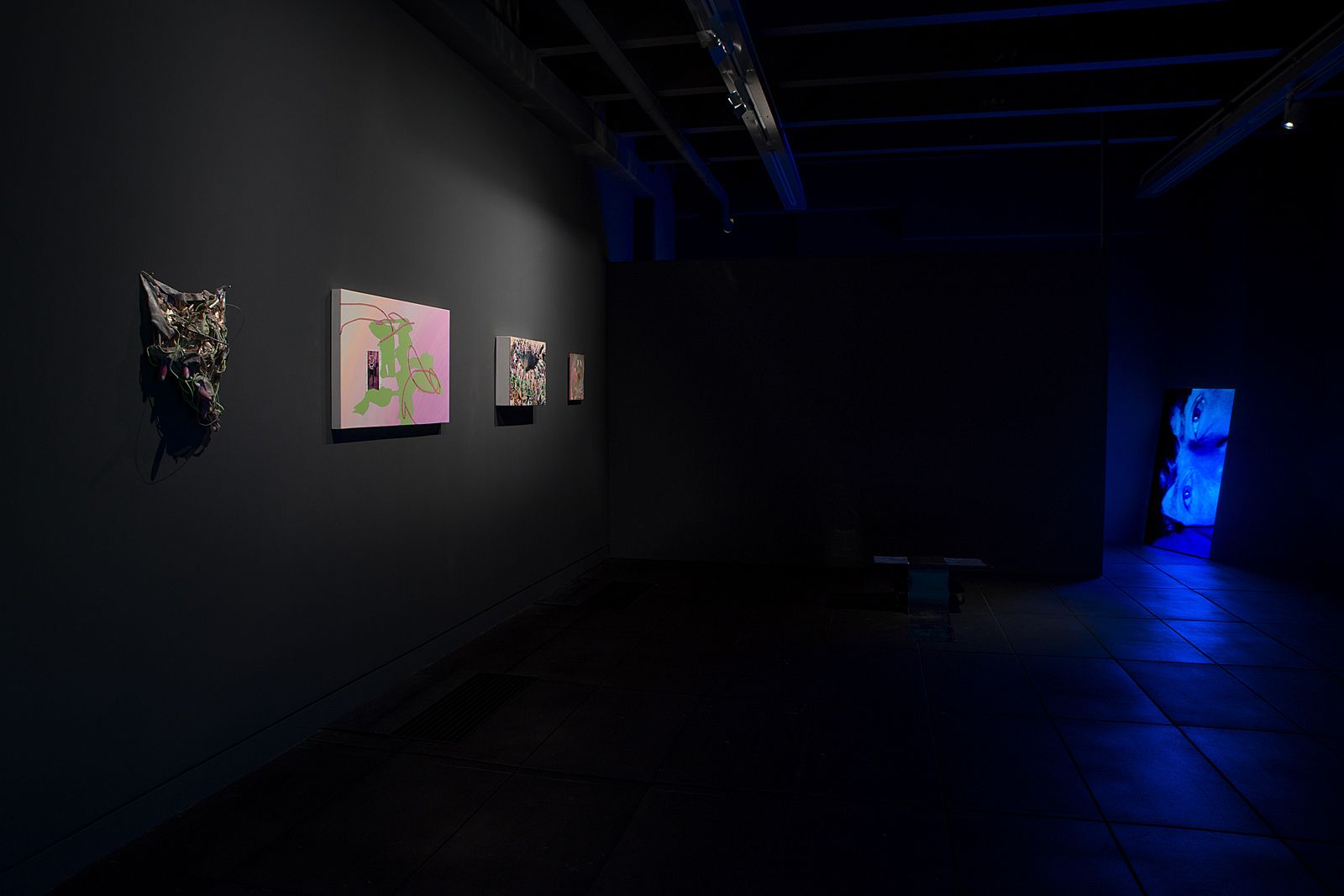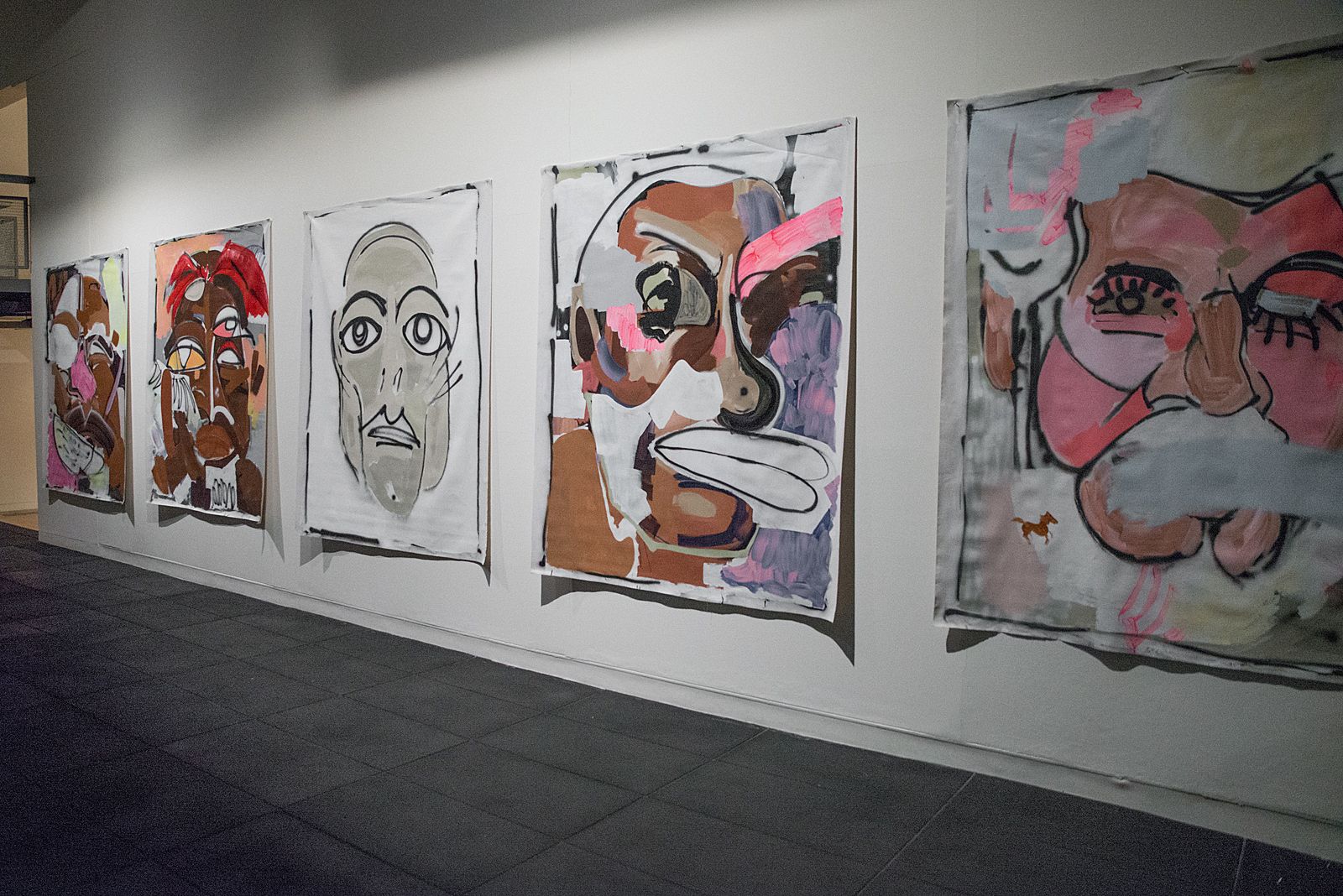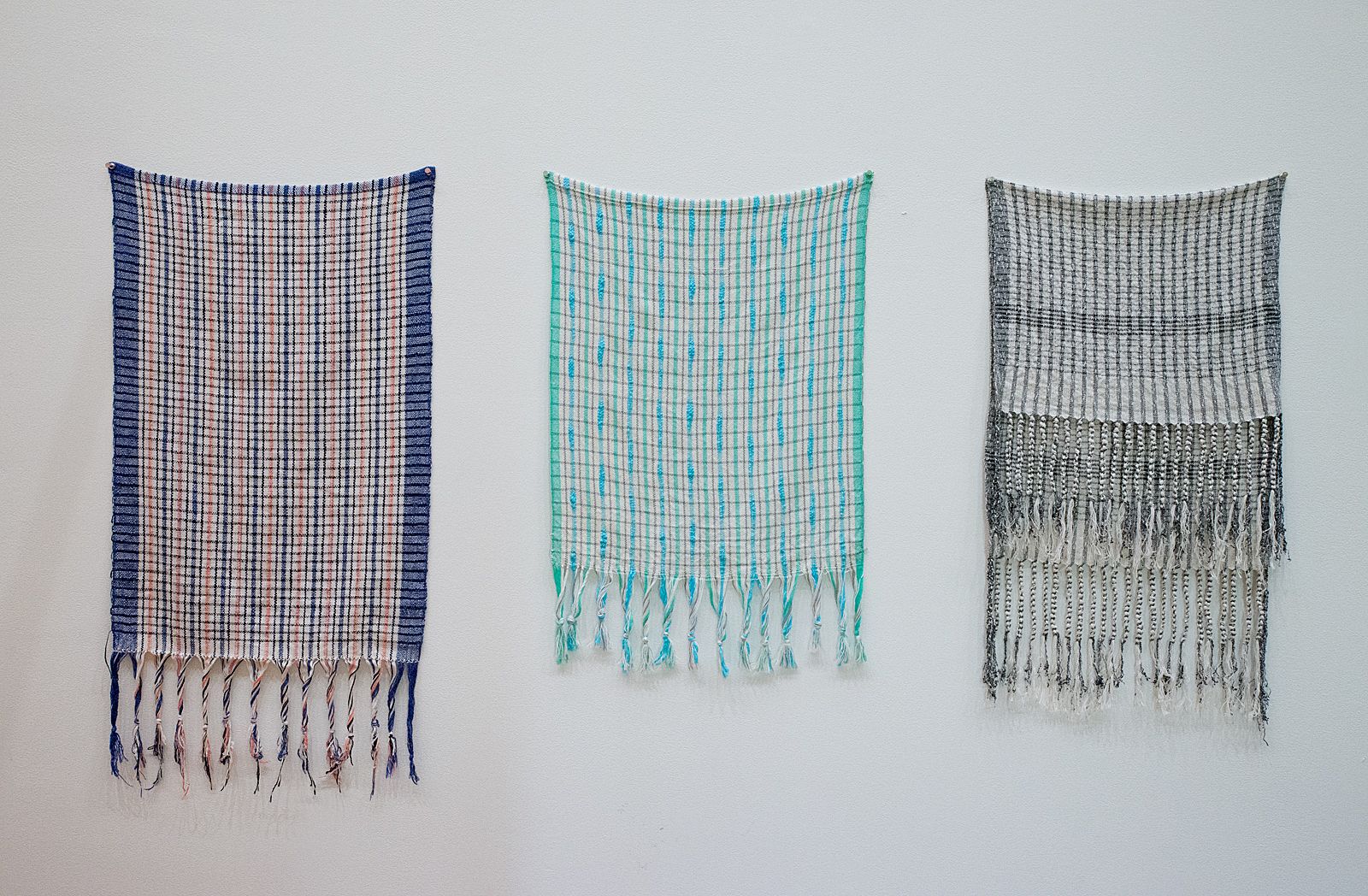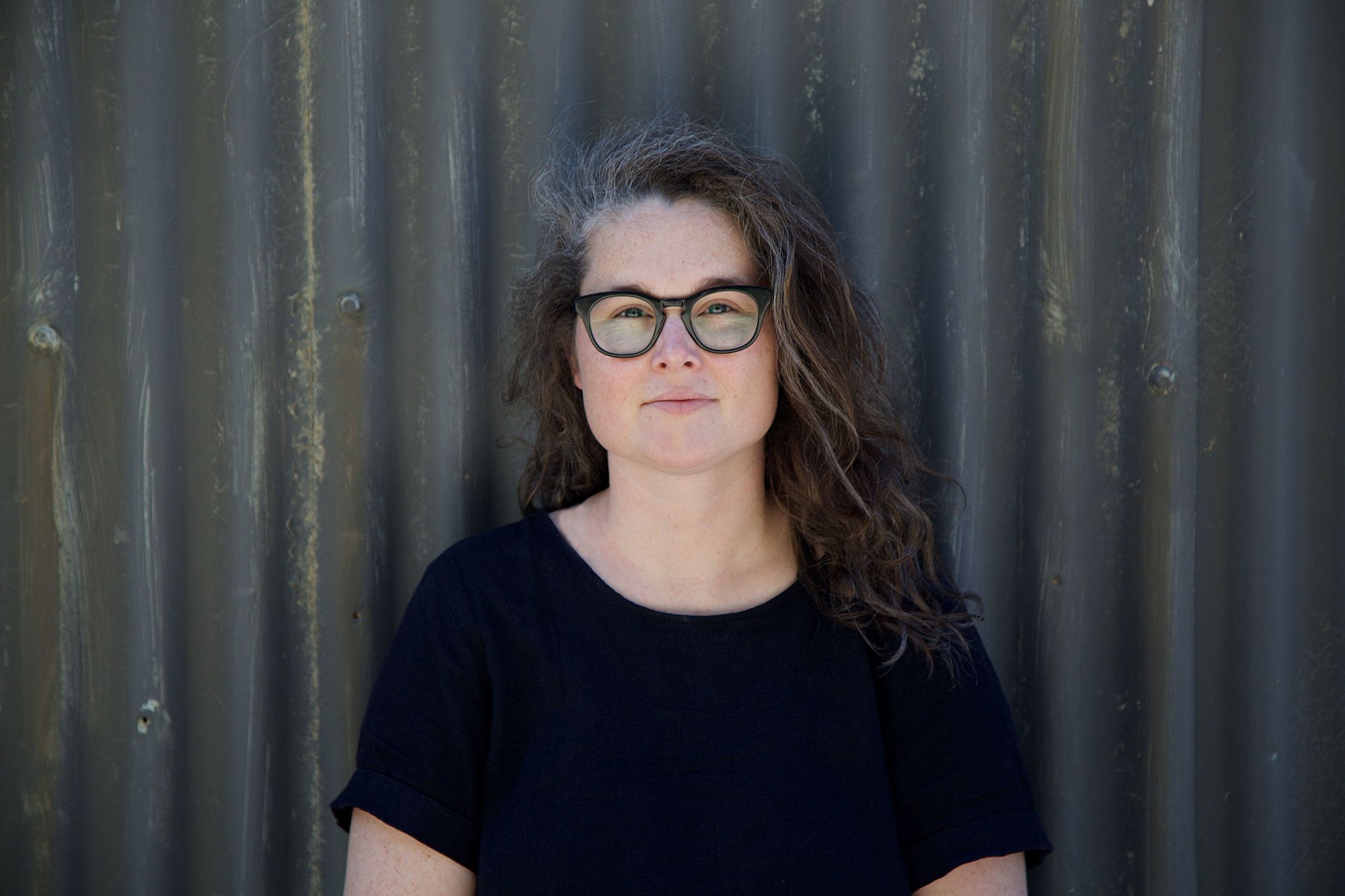Murmurings and Millennials: A Review of The Tomorrow People
Yet another celebration of the emergent artist.
Yet another celebration of the emergent artist.
Adam Art Gallery director Christina Barton’s interest in young artists has been simmering for several years now and has culminated in The Tomorrow People.
In the year leading up to the exhibition I heard that Barton, with co-curators Stephen Cleland and Simon Gennard were searching for young artists. There were studio visits, meetings, vague questions about recent projects, and a summer curatorial intensive. Closer to the reveal there was a trip to the South Island, more visits, more meetings and a widely-flung email to colleagues searching for artists born after 1990 (to be fair the curators seem to have abandoned their focus on this date perhaps due to a dire similarity to Hans Ulrich Obrist’s 1989 project).
A veritable archipelago, the resulting exhibition boasts 25 works from the next generation with a comprehensive programme of forums, workshops, concerts, tours and parties, a thorough exhibition catalogue and series of three new text commissions. What more could there possibly be to speculate on for this reasonably mortified reviewer?
The Tomorrow People follows on the heels of several recent and exemplary exhibitions that have gone deep into emerging practice. One such example is New Perspectives presented by Artspace just 10 months ago. Six of the artists featured in New Perspectives reappear in The Tomorrow People – some with the same works. With the Adam’s position in the same nexus of niche institutions as Artspace, it’s hard to argue that these same works are meeting ‘new audiences’ (as COCA has with its over-baked Precarious series and Contemporary Christchurch). But great news for these six artists, identified as worthy of exhibit by Adnan Yıldız, Simon Denny and Christina Barton.
However, despite the awkward overlap, there are reasonable differences between New Perspectives and The Tomorrow People. New Perspectives was an invitation for emerging artists to join the Artspace community – to connect with outgoing Artspace Director Misal Adnan Yıldız‘s specific curatorial philosophy of active engagement. On the other hand, Barton’s exhibition is more of a curatorial exercise that seeks to learn about the new generation as oppose to Yıldız‘s ideology of engaging with.
It is an exhaustingly vast, detailed survey – not as a result of unedited curating, it is simply an accurate reflection of how the emerging art scene chaotically operates in today’s equally chaotic world.
Furthermore, a great deal of the work in The Tomorrow People has been pulled straight from 2017 independent project space programmes. The most overt example is Ammon Ngakuru’s Shelter for Amnesic Relatives, Blue Oyster’s June 2017 exhibition. Other exhibitions by Quishile Charan and Isabella Loudon were still on at Enjoy and Toi Poneke as The Tomorrow People opened. By lifting works from extremely recent debuts, these smaller commissioning spaces – fighting to be relevant in the niche nexus – start to function as nurseries for larger institutions to pick over without a further thought. With this in mind, what does The Tomorrow People contribute to the field of emerging art in Aotearoa? And how does it compliment and counteract the raft of existing commentary on the subject?
From a curatorial standpoint, The Tomorrow People is a careful look at a milieu inheriting more baggage as the days go by. It is an exhaustingly vast, detailed survey – not as a result of unedited curating, it is simply an accurate reflection of how the emerging art scene chaotically operates in today’s equally chaotic world.
The art world today is a field full of paradoxical meanings that constantly contradict, undermine and invoke each other. It is indeed a collective visual or auditory murmur.[1]
Overwhelmingly The Tomorrow People feels like a murmuring. I am referring to Pascal Gielen’s The Murmuring of the Artistic Multitude, a theory that examines how globalisation and the proliferation of fine arts graduates in recent years has caused a swarm of creative production. Artists are more socio-politically engaged, rejecting the promise of an economic, political or mediagenic life in advance.[2] While this murmuring is indeed en masse, The Tomorrow People is not homogenous, nor in any way does it promote Zombie Formalism. The exhibition positions itself in a socio-political reality specific to ‘the Kiwi millennial’ and prioritises young artists that will inevitably have a hand in shaping its future through artistic production and social commentary.
The exhibition positions itself in a socio-political reality specific to ‘the Kiwi millennial’
* * *
Tim Wagg’s 1991 (2016) isn't the first work you encounter as you enter the space, but it is certainly the most commanding. Loosely-arranged office chairs fill the central floor space facing a large flat-screen television. While I have already viewed the work twice already[3], in this exhibition it establishes a specific curatorial narrative that unfolds throughout The Tomorrow People. 1991 reminds us of the year that New Zealand’s political and economic direction changed irrevocably by the National Government’s Minister of Finance Ruth Richardson. Her ‘Mother of All Budgets’ made severe cuts at the expense of the nation’s most vulnerable. Unemployment, sickness and family benefits were ruthlessly cut or dismantled and Richardson also abolished free services in the healthcare, school and state housing systems. Identifying Wagg (born in 1991) as the inheritor of ‘Ruthanasia’, The Tomorrow People identifies the former Finance Minister’s budget as a monumental turning point for how we are to view the rest of the works to follow.
Sitting idly above 1991 is Deborah Rundle’s What Faith I Have (2012/2017). Glossy golden capital letters command only the attention of those looking up (which, admittedly, was not me at first). Rundle’s statement: ‘What faith I have is in me’ has been inspired by Oscar Wilde’s De Profundis, written while doing hard labour for committing homosexual acts in the late 1890s. Imprisoned at the age of 41, Wilde lived his twenties and thirties as he is remembered today; as a future-thinking, lively and charming young aesthete who is celebrated for contributing immensely to poetry, theatre and literature. In this position, however, Rundle’s statement draws on Wilde’s ‘confraternity of the faithless’ – it consciously critiques today’s neo-liberalist ‘me society’. Rundle’s emergent solo practice (and that of Public Share, the collective she is a part of) often focuses on material labour and the counter-productivity of capitalism. Beyond the Adam, Rundle’s recent solo exhibition at Play_Station in Wellington involved a more thorough investigation into these themes. Her presence in The Tomorrow People, while thematically fitting, seems to function like much of the smaller works in this show – as an index of emerging artist to watch closely.
Nearby, similar economic themes combine in two wall works by Wendelien Bakker: Swimming Pool (2015) and Moon Deed in Concrete (2016). I first saw Bakker’s work in 2013 at Room Four in Christchurch. Titled 24 Hour Fountain, it consisted of loosely-stacked old television sets each depicting part of one scene: a travelling lawn irrigator blasting out thousands of gallons of water across a paddock. Swimming Pool, which I saw in George Watson’s vital bodies at Blue Oyster in 2015, functions in a similar way to 24 Hour Fountain. Bakker exhibits not the pool, nor documentation of the pool, but instead a list of thirty-eight points describing in earnest how she constructed it. Bakker’s writing is comical and entrenched in the everyday:
26.
The man from SSL delivers the pool plaster on the same day I call him. A big van advertising pools stands on our unmown lawn. He says he has been in the pool business for fifteen years and has never seen a pool so rustic. He tells me to get a proper trowel. And looks around the shed to find a bucket more suitable for mixing than my polystyrene container.
27.
Our neighbours start peering over the fence when they walk past. Also the ones that never talk to us. They own a pool. I hear him and his children swimming in there while I mix mortar.
Bakker’s simple door-sized pool is still in the backyard of her Grey Lynn flat (“the best house on the worse street”[4]), where unmown lawns mingle with multi-million dollar renovated bungalows or so called ‘character housing’.
Moon Deed in Concrete (2016) is a cast block of concrete roughly the size of an A4 sheet of paper. Without having read the catalogue, it could be mistaken as a piece of the pool on display. But inside the cast block is a deed to a piece of land on the moon worth $4,000. Having wanted to buy a piece of land on Earth but unable to secure a small enough piece to match her budget, Bakker has forcibly joined the privileged few who own land outright and have a pool. Weighted in satire, Bakker’s works are a performative result of what today’s artistic milieu do not dream of having. Upon considering this with Rundle’s Wilde reference above – we mustn’t forget that the artistic multitude has never been in a position to afford such static luxury or hold any net worth in dollars. It is the value of their contribution to society both intellectually and ephemerally that is the most important and perhaps least understood by an extreme right-winger like Richardson.
A shifting of value is also present in Fresh and Fruity’s very refined Manifesto vol. 1: Fresh and Fruity is a sexy new look (2014/2017). As an evolving work, this iteration of the collective’s manifesto consists of an enormous hot pink ninety-nine point takeaway poster, and a small line of text printed low along a gallery wall reading:
As a condition of engagement with The Tomorrow People, Fresh and Fruity has proposed that the Adam Art Gallery create its own safe space policy and procedures in consultation with other galleries and relevant organisations.
This request speaks to the work Fresh and Fruity have done in the emerging artist community since they established themselves as an artist-run space in 2014. As a kind of ongoing para-institutional art project[5] now operating as a nationwide collective, they have used their time as emerging practitioners wisely: experimenting, pushing-boundaries, collaborating, protesting, supporting and promoting anti-institutional practices. Fresh off the back of two Christchurch based curatorial projects (clasping hands together under the table facilitated by artist-run space Ōtautahi Kōrerotia and Khye Hitchcock’s empowering look at artist collectives MAKING SPACE at COCA) this public request to the Adam raises their value as practitioners. Frankly, if you want them in your exhibition, you can have them on their terms, soon to be your terms too.
As with New York artist collective W.A.G.E, Fresh and Fruity’s methodology isn't so much about institutional critique as it is about advocacy for the well-being of artists. Without artists, exhibitions and therefore institutions and the curatorial power that so often treats artists like a commodity wouldn't exist. This self-determination is perhaps what all of these artists have in common, they have taken control of their own narrative and their own futures.
* * *
Around the corner are works by Teghan Burt, Theo Macdonald and Xun Cao. During the exhibition tour, Gennard introduced this space as a where performativity, identity and sincerity meet. To me, it also feels compellingly ‘millennial’—particularly with Burt’s striking work Substitute for Mortals (2016). A glaringly nineties series of outfits hang on the wall—yet there’s something not quite right. This version of the nineties looks good. Imagine: Nirvana, skate tees, wide-leg jeans, hoodies, unbuttoned plaid shirts, army boots, Winona Ryder, I Love Dick. But where are the dungarees, jellies, mood rings, tearaways, rollerblades, B*Witched, chain wallets and chatter rings? Burt’s warped view of the nineties is nostalgia once removed; as someone in her early twenties in 2017, she has missed out on the best time to be an artist on Karangahape Road.
Originally shown at her short-lived super-hyped and multi-titled artist-run space Terror Internationale, above Joy Bong Thai Restaurant on K Rd, Substitute for Mortals signifies everything the K Rd of the recent past has inadvertently brought to the K Rd of the present. This gloriously run down, crumbly, dirty urban streetscape, these days teeming with artists, vagrants and vanguards, is constantly being flagged for a steam-rolling gentrification because of the way artists use low socio-economic communities as urban playgrounds. The anxiety of doing justice to a place loaded with meaning that holds the memory of past artist-run heroes like Giovanni Intra or the founders of Teststrip is a burden for the self-aware millennial artist.
Lip service also resonates in Macdonald’s Bowie video series, originally put together during a residency at F U Z Z Y V I B E S. Aesthetically similar Yu-Hsuan Lin’s 2016 Man I am on TV series, the difference here is Macdonald is documenting a three-month stint where he dressed like David Bowie. Macdonald is entertaining to watch and holds the room in the same way artist Daphne Simons does with her latest work. Both artists explore the uncanny in a way only a young artist living in this unprecedented milieu could.
Scattered across a nearby wall are photographs from Xun’s queer, energising Dick Head (2016-17) and Passion of Cut Sleeves (2016) series. A sharp breathe of cool air compared to the heart-warming dust and grime Burt conjures, Xun’s work feels like a deeply personal series of self-portraits that are inherently international in tone. They could easily sit inside the pages of ever youthful VICE magazine, perhaps alongside Lin Zhipeng’s photographs recounting his experiences of China’s young hedonistic generation.
* * *
Moving to the second level of the exhibition, among the various screens and projections in the Kirk Gallery, sit four intelligently-placed spot lit static paintings by Sam Clague that are “knee-jerk reactions to the super glut of the online world”.[6] A little reminiscent of Dan Arps’ Gestapo Pussy Ranch days, Clague works with popular imagery including pornography. Like Arps, his most abject works are his best. Wall relief piece Bad, Really Sad, A Great Success, Terrific (2017), made from a range of media including silicone, wire, spray paint, plaster, cord and a balloon, was recently shown at DIRT Gallery in Dunedin. Sagging with an excess of materials, gruesome rubber fingers reach out in different directions as if trying to escape a shrinking, deflating painting that previously held some kind of conventional structure. Hal Foster’s description of the abject as “rich in ambiguities”[7] is perfect for a painter like Clague who is trying to make sense of a world so full of imagery it is said that each month “a millennial population roughly the size of Russia actively contributes to Instagram”.[8]
Also in the Kirk Gallery, William Linscott works on a global scale with his seventeen-minute video XCIII (2016), which could be mistaken for work by Hito Steyerl. Linscott explores the computated futures, utopian ideas and data-heavy, state-based surveillance models that are increasingly mediating our experience of the world.[9] The idea that we seem to be consuming far more culture than we create brings forth Neil Postman’s comparison between George Orwell’s 1984 and Aldous Huxley’s Brave New World:
Orwell feared those who would deprive us of information. Huxley feared those who would give us so much information that we would be reduced to passivity and egoism. Orwell feared that the truth would be concealed from us. Huxley feared the truth would be drowned in a sea of irrelevance. Orwell feared that we would become a captive culture. Huxley feared that we would become a trivial culture.[10]
Jesse Bowling’s nearby Apple of My Eye (2017) doesn’t fear what technology is becoming as much as what it has already become. Originally shown at MEANWHILE, the work depicts the artist scrolling through his phone. We see Bowling’s eyes from inside the screen – pupils dilating under a blue hue, his brain experiencing a neurochemical reaction upon receiving an email or a like.
While Bowling is suspended in a constant state of hyper-stimulation, nearby Aliyah Winter’s balcony-based videos Danny Boy and Eli Jenkins’ Prayer (both 2015) offer a different experience of being. Originally shown at 30 Upstairs, the works require headphones and patience for CRT televisions and VHS quality. Winter tenderly considers time through a queer narrative that feels like a physical antithesis to Bowling’s virtual reality, while offering a similar message. Give yourself a moment to experience the physical world. Slow down. Listen. Remember. Take your time. Be present and embody the complex reality we live among today.
* * *
The Tomorrow People concludes on the Adam’s lower level with works that have incredibly unique, playful and serious stories to tell. Christopher Ulutupu’s beautifully shot Into the Arms of My Colonizer (2016) is a sixteen-minute film divided into seven abstract chapters. Ulutupu uses an article from a Polynesian women’s magazine encouraging Pacific women to date interracially[11] as a springboard for addressing feelings of belonging and disconnect as an artist living in multiple worlds or a diasporic hyphen space.
Multiplicity is also present in Christina Pataialii’s neighbouring Dream Team paintings (all 2016). Previously shown at Whitecliffe’s DEMO space, Pataialii calls the series “her Mt Rushmore”. Just like the 60-foot-high American monument, she brings her audience face to face with her idols: Mike Tyson, 2Pac, Michael Jackson, Dwayne ‘The Rock’ Johnson and Kenny Rogers. In the exhibition tour, Pataialii spoke of being “a young Pasifika girl searching for similar brown bodies among a wash of white skin on television in the 1990s”. Serving as pop culture reference points, each caricature has the fleshy dynamism of Cubism except Michael Jackson who remains flat and grey like a ghost among the living.
Around the corner Daegan Wells’ subtle, almost missed Bleached Terraces (2017) is also a tribute his heroes: Olivia Spencer Bower and Yvonne Rust. Wells presents two objects that take the place of the deceased: a jug by Rust and a photograph of Spencer Bower’s studio. Recently Wells has developed a particular way of making that has become obsessively heartfelt, yet it has started to lack the hand of the artist himself. Aesthetic metaphors entombed in a museum casing function more as a mood board than a post-object assemblage. Having seen Jaimee Stockman-Young’s Spectres of Violence series for Passionate Instincts at The Physics Room in 2016, this way of making feels very popular at the moment. Stockman-Young sourced and exhibited images from the LAGANZ Archive of the “damage caused by a suspected arson fire at The Dorian, Christchurch, 1986”. This kind of tributary practice is meaningful, but preliminary.
The method of story telling without words is also present in Quishile Charan’s hand printed cloth work Temporary Vanua (2016) and Annie Mackenzie’s hand-woven towel works in International Foodcourt / Global Classic (2016), which are part of a collaborative installation with Dave Marshall that debuted at The Physics Room in 2016.
A self-professed “yesterday person”, Mackenzie’s tea towels quietly connect her to generations of women through the language of weaving. Having always felt attached to textile work, Mackenzie recently discovered that she comes from a long line of Scottish industrial weavers, including her great-grandmother also named Annie Mackenzie.[12] To try and feel the historic weight of weaving practice, she has started with simple experiments that have resulted in such expertly woven pieces that could be mistaken for any classic mass-produced kitchen tea towel. They are only distinguished as artefacts by their unhemmed ends dangling decoratively down the wall.
Undulating from the ceiling above, is Charan’s work Temporary Vanua. After looking up at her 31 metres of labouriously hand-printed Fijian flora and fauna, and reading about her experience as the inheritor of colonial trauma in the small booklet available below, it is clear Charan has an impressive, meaningful emerging practice. Supported by a strong connection to her aaji and namesake Shila based in Fiji, the making of Temporary Vanua builds a healing connection between generations oppressed and forgotten by indentured labour. In conversation with Charan, Casey Carsel discusses the way in which Charan releases her community’s story from a controlled colonial narrative through the practice of making:
To reframe one’s own understanding of a history is a labour-intensive process that requires resolve. But in doing so—in repeating methods of textile making passed down between generations of women—a connection is regained and a conversation may build over generations in the language most suited to it.[13]
During the exhibition tour, Barton declared The Tomorrow People to have a certain vulnerability to it. After experiencing Temporary Vanua powerfully moving through the Adam like a bolt of lightening, I must disagree. There is no weakness here, only strength.
* * *
For this reviewer, The Tomorrow People is an exhibition that has surprised me in several ways. While yet another group exhibition by a larger institution that capitalises on work done through smaller spaces, it is still pleasing to see the professionalisation of the emergent artist celebrated once again and presented as a central component of society with a thoughtful curatorial narrative.
Ultimately though, The Tomorrow People affirms the fickleness of the term millennial
It would have been interesting to see what the exhibition would have been like if the provenance of each work was included in the catalogue. This would have assisted the less initiated viewer in gleaning more of an understanding into how the emerging artist builds a practice in the world today. In this way it did feel as though part of the story of Barton’s tomorrow people had been skipped over.
Ultimately though, The Tomorrow People affirms the fickleness of the term millennial. It is an armoury for today’s world. I think Barton knows this – having named the exhibition after a 1970s television series about a group of mutant X-Men-like young people with special powers. As Huxley’s brave new world dawns, The Tomorrow People advocates for a generation of artists who are working just as hard, if not harder in the face of constant political and economic chaos to contradict, contribute and complicate the ever globalising, murmuring tomorrow.
Adam Art Gallery
22 July 2017 – 1 October 2017
All images courtesy of the gallery and the artists
[1] Pascal Gielen, The Murmuring of the Artistic Multitude: Global Art, Politics and Post-Fordism (Valiz: Antennae, 2015) 22.
[2] Ibid.
[3] Tim Wagg’s 1991 has also featured in New Perspectives and in Andrea Bell’s curatorial internship exhibition By the Laws of Chance at Dunedin Public Art Gallery also in 2016.
[4] Wendelien Bakker, The Tomorrow People: Exhibition Tour, 22 July 2017.
[5] Jeff Khonsary and Kristina Lee Podesva, Institutions by Artists: Volume One (Vancouver: Fillip Editions and the Pacific Association of Artist Run Centres, 20120), 8.
[6] Sam Clague, Exhibition Tour.
[7] Hal Foster, “Abject” in Bad News Days: Art, Criticism, Emergency (London: Verso Books, 2015), 16.
[9] William Linscott, Exhibition Tour.
[10]Neil Postman, Amusing Ourselves to Death: Public Discourse in the Age of Show Business (New York: Penguin Books, 2005), 1.
[11] Simon Gennard, Exhibition Tour.
[12] Annie Mackenzie, Exhibition Tour. See also Simon Palenski’s exhibition essay for Mackenzie’s 2016 solo show at Enjoy Public Art Gallery Walking Forwards Backwards. Palenski describes how “In the same way histories and stories can be expressively told through textiles, they can also be unravelled and forgotten.”
[13] Casey Carsel, A Journey Begins, published on the occasion of The Tomorrow People, 2017. Another conversation with Charan about her practice can be accessed on Enjoy’s blog, published on the occasion of her 2017 exhibition collaboration Namesake with Salome Tanuvasa. This exhibition also explored ideas of displacement that can be seen within the poetic visual language of Temporary Vanua.

